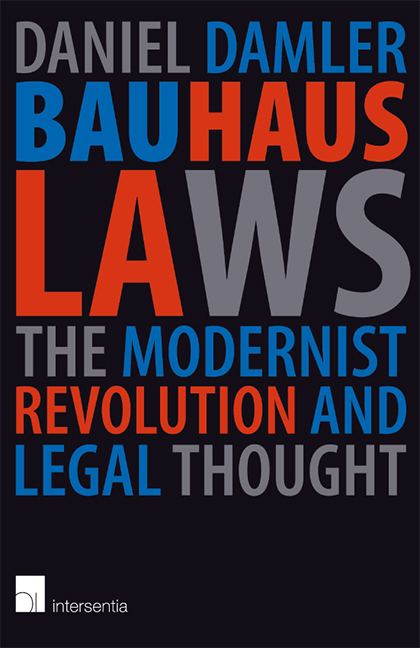Book contents
- Frontmatter
- Acknowledgements
- Contents
- Platonic Modernism: Introduction
- 1 Vienna 1900: Pure Legal Craftwork
- 2 Utopias Built with New Forms and Materials: Taut, Zamyatin, Le Corbusier
- 3 Hijacking Modernism: Bauhaus Values in the Third Reich
- 4 One-World Beauty: International Law and International Style
- 5 Regaining Sovereignty: “Transparency” in Postwar Germany
- Kandinsky's Laws: Epilogue
- About the Author
Kandinsky's Laws: Epilogue
Published online by Cambridge University Press: 15 November 2019
- Frontmatter
- Acknowledgements
- Contents
- Platonic Modernism: Introduction
- 1 Vienna 1900: Pure Legal Craftwork
- 2 Utopias Built with New Forms and Materials: Taut, Zamyatin, Le Corbusier
- 3 Hijacking Modernism: Bauhaus Values in the Third Reich
- 4 One-World Beauty: International Law and International Style
- 5 Regaining Sovereignty: “Transparency” in Postwar Germany
- Kandinsky's Laws: Epilogue
- About the Author
Summary
It is widely assumed that values arise solely within the framework of the specific normative order they refer to (aesthetics, science, ethics, law, etc.). On the previous pages I have challenged this view, arguing that aesthetic, epistemic and moral (legal, political) values are correlated because of a common underlying mechanism. There is a constant exchange of principles and concepts between apparently distinct normative spheres.
This idea is not entirely new. It has failed, however, to have any noticeable impact – at least not in the modern era and the Western tradition – mainly because it runs counter to the need of academic disciplines to carve out a niche for themselves, but also because cognitive processes are all too often heedlessly measured in sociological categories. Ernst Gombrich, in a short essay from 1952, was the most succinct in describing the characteristics of values being experienced across normative boundaries:
What matters is that in our living experience they always find resonance in other areas of value. There was once a historical reason for protesting against a confusion of values in criticism, most of all against a facile confusion of art and morality, but now when this danger no longer exists we should again acknowledge the fact that there are few people who never experience great art in terms of moral values.
It was Gombrich who applied the term “synaesthesia” in this context. Actual, “true” synaesthesia is generally known to refer to concomitant sensation, i.e., the perception of two senses (sound, color, taste, temperature, etc.) when only a single sense is stimulated. This unusual phenomenon has captured the interest of modernday cognitive scientists but was addressed as early as the 1920s by the likes of Wolfgang Köhler and other pioneers of “gestalt psychology.” Synaesthesia, moreover, was a key concept in art theory in the first half of the twentieth century. Gombrich, as an art historian, was well acquainted with it of course, as well as with gestalt psychology, which generally had a strong appeal to artists and intellectuals in the interwar period, especially those who were active at the Bauhaus.
- Type
- Chapter
- Information
- Bauhaus LawsThe Modernist Revolution and Legal Thought, pp. 185 - 200Publisher: IntersentiaPrint publication year: 2019



